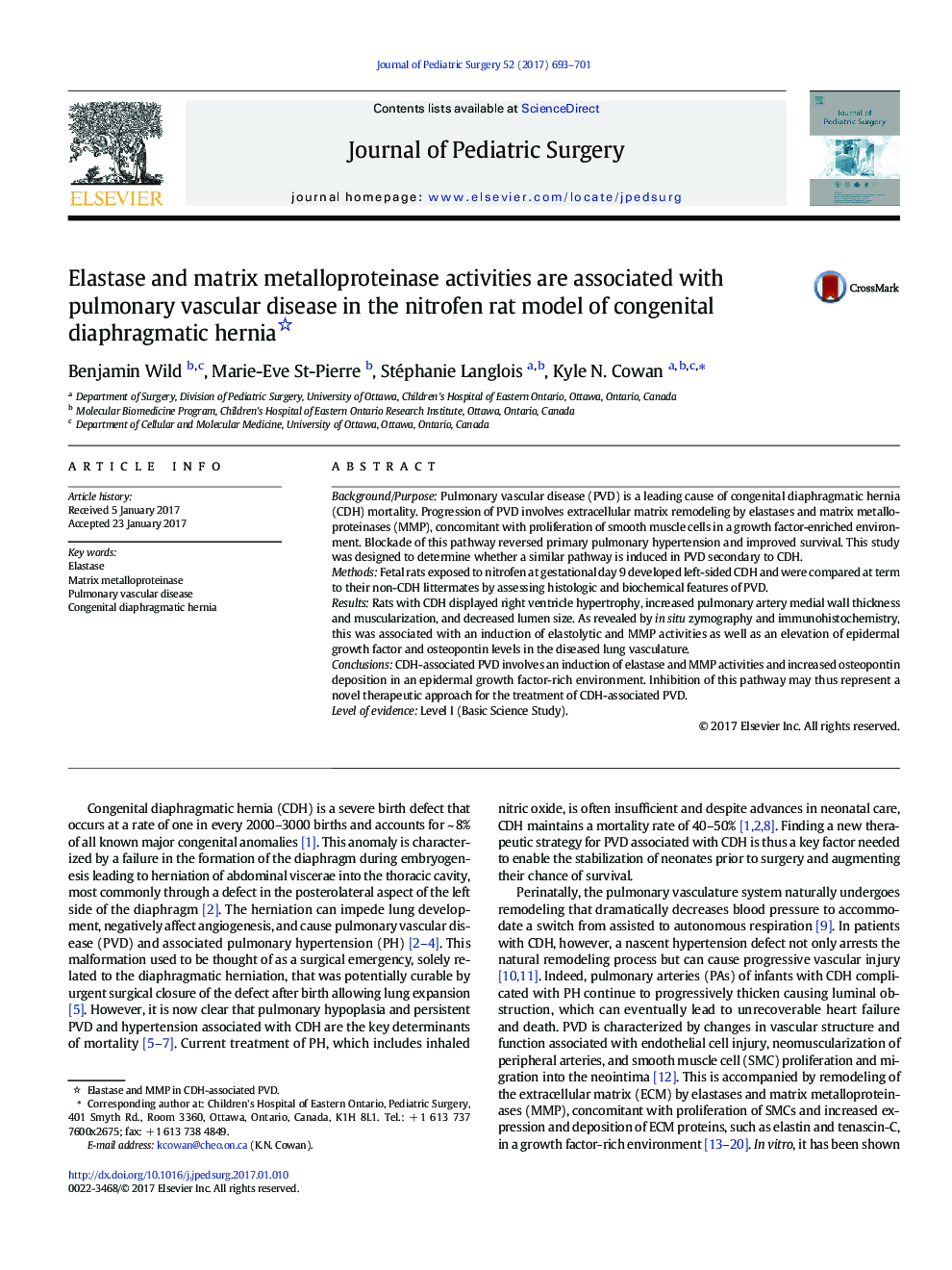| Article ID | Journal | Published Year | Pages | File Type |
|---|---|---|---|---|
| 5718446 | Journal of Pediatric Surgery | 2017 | 9 Pages |
Background/PurposePulmonary vascular disease (PVD) is a leading cause of congenital diaphragmatic hernia (CDH) mortality. Progression of PVD involves extracellular matrix remodeling by elastases and matrix metalloproteinases (MMP), concomitant with proliferation of smooth muscle cells in a growth factor-enriched environment. Blockade of this pathway reversed primary pulmonary hypertension and improved survival. This study was designed to determine whether a similar pathway is induced in PVD secondary to CDH.MethodsFetal rats exposed to nitrofen at gestational day 9 developed left-sided CDH and were compared at term to their non-CDH littermates by assessing histologic and biochemical features of PVD.ResultsRats with CDH displayed right ventricle hypertrophy, increased pulmonary artery medial wall thickness and muscularization, and decreased lumen size. As revealed by in situ zymography and immunohistochemistry, this was associated with an induction of elastolytic and MMP activities as well as an elevation of epidermal growth factor and osteopontin levels in the diseased lung vasculature.ConclusionsCDH-associated PVD involves an induction of elastase and MMP activities and increased osteopontin deposition in an epidermal growth factor-rich environment. Inhibition of this pathway may thus represent a novel therapeutic approach for the treatment of CDH-associated PVD.Level of evidenceLevel I (Basic Science Study).
